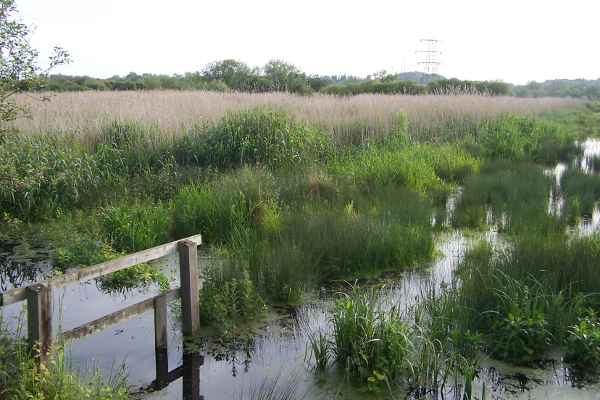Observations

March – April 2018
Notable wildfowl counts included up to seven Shelducks, a pair of Garganeys and three Pintails. In addition our now regular summer visiting male Wigeon has reappeared: although he can fly he has a droopy wing and seems to be a confirmed bachelor. We’re not quite sure what he does in winter but presumably turns down a lot of offers to fly off to the cold with eligible females. He was still present at the end of the period in glorious full-adult plumage.
For some lucky observers the bird of the year so far was our second ever Great White Egret which spent an hour or so in the meadow.
The usual local species of waders were around in small numbers – Oystercatcher, Redshank, Lapwing and the returning Little Ringed Plover. There were still Green Sandpipers on site, and a Jack Snipe and two Snipe also stayed to the end of the period.
In addition we had some nice visitors passing through on migration. Pride of place must surely to go to the two Avocets which paused briefly on No 1 Lagoon – only our third record and our first since 1984.
There was a Dunlin on three dates, presumed to be the same bird around the area. Twenty Bar-tailed Godwits were followed by five Black-tailed Godwits, with a further two a few days later; and one excellent day revealed a Curlew and a Spotted Redshank on No. 1 Lagoon! Finally a Common Sandpiper passed through, staying a couple of days.
Interesting Gulls were seen mid-April with a Little Gull followed by a Mediterranean Gull. Common Terns seemed to be late to arrive, with no more than four by the end of April.
Up to three Cuckoos returned, including a female, so it is reassuring to know that this species is still present and will probably breed.
A Barn Owl was a welcome sighting at the beginning of March, and a Raven settled on the hut pylon a few days later. Rye Meads rarities included a Coal Tit, a House Sparrow singing for a few days at the RSPB Centre, and a Yellowhammer which sang for a couple of lonely weeks and then gave up.
Up to ten Swifts had been observed by the end of April. Other passage migrants included a Whinchat and two records of two and one Wheatears, and one to two Yellow Wagtails on three dates.
Cetti’s Warbler and Chiffchaff were present throughout but small arrivals of the latter species were noted in late March. A ‘tristis’ type Chiffchaff seen on two dates in March was captured and ringed, and donated a feather from which we await DNA results to confirm whether this was indeed a Siberian Chiffchaff.
Willow Warbler passage was abysmal, even by recent standards; only eight have been recorded to date, and none have remained to hold territory. In contrast Blackcaps arrived in good numbers, peaking at an estimated 65 towards the end of April.
The first Lesser Whitethroat was exceptionally early on 13th April, this is our joint earliest ever along with one in 2009. Whitethroats on the other hand were rather late with our first arriving with an early Garden Warbler. Sedge and Reed Warblers made their appearance and there was a Grasshopper Warbler reeling away in the meadows.
Winter thrushes left early with the last Fieldfares and Redwings gone in March. The Beast from the East and its later baby brother, the Mini-beast, probably pushed our birds somewhere less inhospitable.
The monthly bird count in March found 48 Chaffinches; Goldfinches peaked at 29 and Siskin at 18, and a small passage of Linnets peaked at six, our best count for some time!
Funny how such ‘commonplace’ birds as Linnet, Coal Tit and House Sparrow can get you enthused at Rye Meads!
